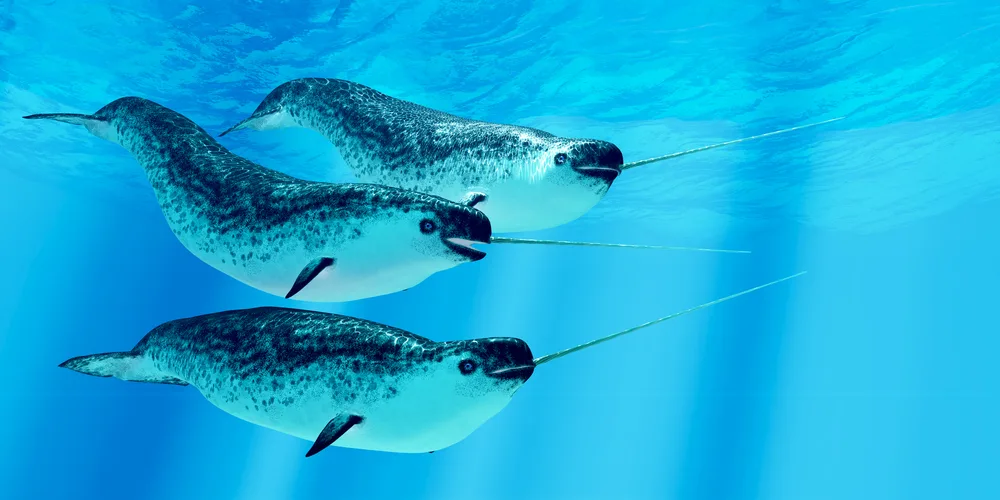Deep in the icy Arctic waters, the mysterious narwhal has long captivated human imagination with its distinctive spiral tusk. Often called the “unicorn of the sea,” this elusive marine mammal possesses one of nature’s most unusual adaptations – a protruding spiral tusk that can grow up to 10 feet long. While scientists have debated the tusk’s purpose for centuries, groundbreaking research has revealed one of its most remarkable functions: hunting. Narwhals use their iconic tusks to stun fish before consuming them, employing a sophisticated technique that demonstrates both the evolutionary ingenuity and specialized hunting abilities of these arctic specialists. This hunting behavior, only recently documented through careful observation and tracking technology, provides a fascinating window into the narwhal’s daily survival strategies in one of Earth’s harshest environments.
The Mysterious Narwhal: An Arctic Specialist
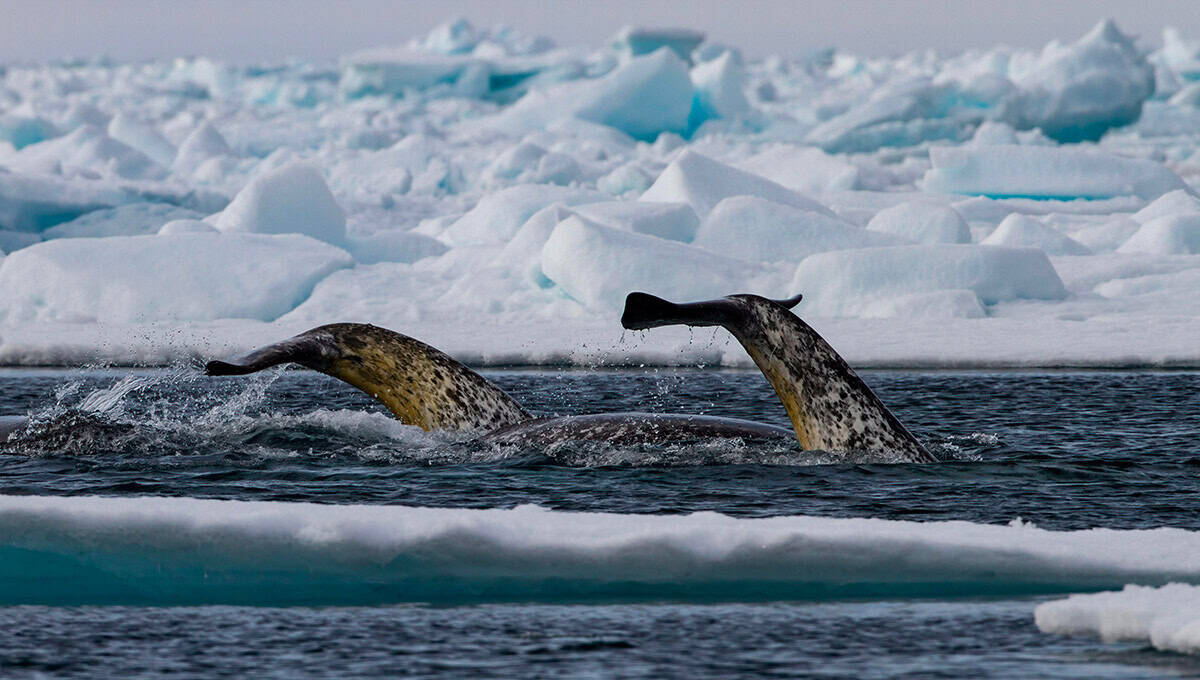
Narwhals (Monodon monoceros) are medium-sized whales that inhabit the Arctic waters surrounding Canada, Greenland, Norway, and Russia. Growing to lengths of 13-18 feet and weighing up to 4,200 pounds, these cetaceans are perfectly adapted to their frigid environment with their mottled gray coloration and thick blubber layer. Unlike most whale species, narwhals lack a dorsal fin—an adaptation that allows them to navigate more easily under ice sheets.
What truly sets narwhals apart, however, is their extraordinary tusk, which is actually an elongated left canine tooth that spirals counterclockwise and protrudes from the upper lip. While the tusk is primarily found in males, some females develop smaller versions, and rare cases of double-tusked males have been documented. As deep divers capable of descending over 5,000 feet, narwhals have remained one of the most enigmatic marine mammals, with much of their behavior hidden beneath remote Arctic ice floes.
The Extraordinary Narwhal Tusk: Structure and Development
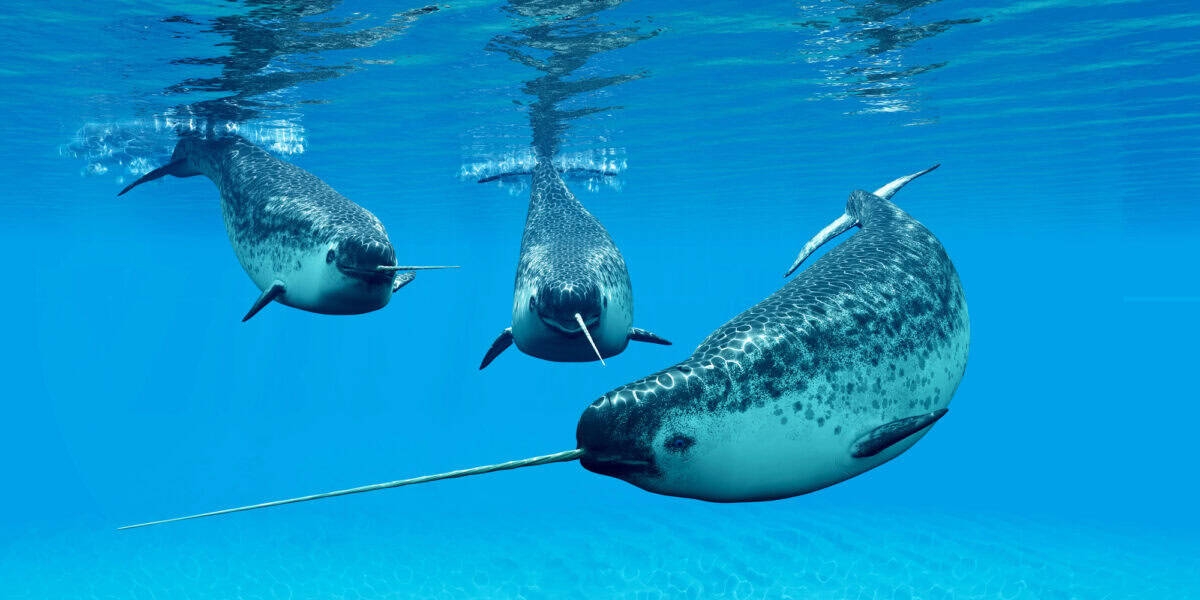
The narwhal’s iconic tusk is a biological marvel with unique structural properties. Unlike ordinary teeth, the tusk lacks the protective layer of enamel and instead exposes its inner dentin to the external environment. This dentin is organized in a complex arrangement with millions of microscopic tubules that extend from the central nerve to the tusk’s surface. The tusk grows throughout the narwhal’s lifetime, typically reaching lengths of 5-10 feet, though specimens over 10 feet have been recorded.
Development begins around the first year of life in males, gradually elongating and spiraling as the animal matures. The tusk contains a central pulp cavity with nerves and blood vessels, making it a highly sensitive organ. This sensory capability is crucial for the narwhal’s ability to detect subtle environmental changes, including water temperature, pressure, and salinity. Scientific analysis has revealed that the tusk’s structure creates a delicate balance between strength and flexibility, essential characteristics for both social interactions and hunting.
Historical Mystery: Centuries of Speculation

Throughout history, the narwhal’s tusk has inspired wonder, myth, and scientific speculation. During medieval times, these tusks were traded as “unicorn horns” and were believed to possess magical properties, including the ability to neutralize poison. European monarchs paid fortunes for these prized artifacts, with Queen Elizabeth I reportedly purchasing a narwhal tusk for £10,000—equivalent to the cost of a castle at that time. Scientific theories about the tusk’s function have evolved dramatically over centuries.
Early naturalists proposed it served as an ice-breaking tool, a weapon for male-to-male combat, or even as a means to spear prey. Others suggested it might function as a rudder for swimming or as a sensory organ. The secretive nature of narwhals, living in remote Arctic regions largely inaccessible to researchers, meant that direct observations of tusk use remained elusive until recent decades. This long-standing mystery contributed to the narwhal’s mythical status and made the eventual discovery of their hunting technique all the more significant to marine biologists worldwide.
Breakthrough Research: Documenting the Stunning Behavior

The first conclusive evidence of narwhals using their tusks to stun fish came in 2017 when Canadian researchers captured drone footage of this remarkable behavior. The groundbreaking study, led by marine biologists from Fisheries and Oceans Canada, documented narwhals in Nunavut waters rapidly striking Arctic cod with quick, precise movements of their tusks.
The high-resolution footage clearly showed the narwhals delivering sharp, swift taps to the fish, temporarily immobilizing them before suction-feeding on the stunned prey. This research built upon earlier studies from 2014 that had attached specialized cameras and motion sensors to several narwhals, which captured similar feeding behaviors from the animals’ perspective.
The stunned fish exhibited temporary paralysis, allowing the narwhals to easily consume them without expending additional energy in pursuit. This methodical approach to hunting represents a significant advancement in understanding narwhal behavior and resolved decades of scientific debate about the tusk’s functional role. The research team noted that this hunting technique appears highly efficient, particularly in the energy-demanding Arctic environment where conservation of calories is essential to survival.
The Mechanics of Fish Stunning

The process by which narwhals stun fish involves precise neuromuscular control and specialized tusk movements. When hunting, a narwhal approaches its prey—typically Arctic cod, halibut, or other cold-water fish—and executes a rapid lateral motion with its tusk. This swift strike delivers a calculated blow to the fish’s body or head region, causing temporary neurological disruption without necessarily piercing the prey.
High-speed video analysis reveals that the strike occurs in less than half a second, with the narwhal exhibiting remarkable accuracy even in low-visibility conditions. The force delivered is sufficient to temporarily impair the fish’s swimming capability but calibrated enough to avoid damaging the tusk. Following the stunning strike, the narwhal creates negative pressure by rapidly expanding its oral cavity, effectively vacuuming the incapacitated fish into its mouth.
This entire sequence happens in approximately 1-2 seconds, demonstrating extraordinary hunting efficiency. Researchers have observed that narwhals can adjust the intensity of their strikes based on prey size, using more forceful blows for larger fish and gentler taps for smaller prey, suggesting sophisticated cognitive control over this hunting behavior.
Sensory Capabilities: How Narwhals Locate Prey
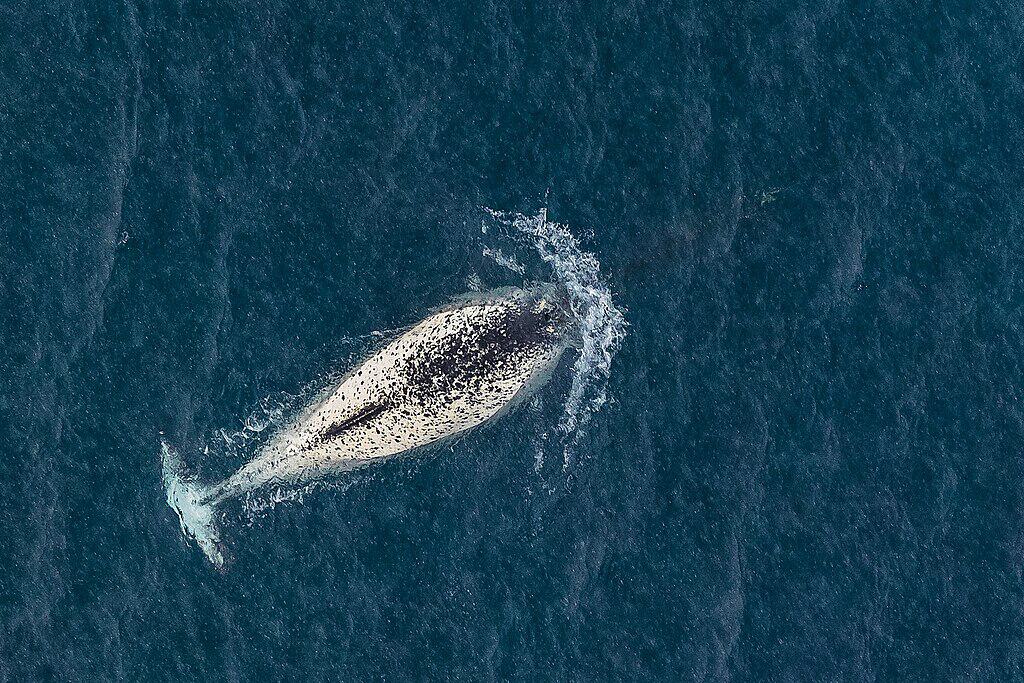
Narwhals possess remarkable sensory capabilities that enable them to locate prey in the dark, ice-covered Arctic waters. Their tusk plays a crucial role in this process, functioning as a sophisticated sensing organ with up to 10 million nerve endings. Research has demonstrated that narwhals can detect minute changes in water temperature, salinity, and pressure through their tusks.
Additionally, they employ echolocation—producing high-frequency clicks that bounce off objects and return as echoes, creating detailed “sound pictures” of their surroundings. Studies using hydrophones have recorded narwhals emitting distinctive clicking patterns when approaching fish schools, suggesting they use acoustic information to pinpoint prey locations. The tusk’s sensitivity may also help narwhals detect fish electrical signals, similar to how sharks use ampullae of Lorenzini to sense prey bioelectrical fields.
This multisensory approach allows narwhals to hunt effectively even in complete darkness or murky waters. Fascinatingly, researchers have observed narwhals adjusting their hunting strategies seasonally, using different sensory modalities depending on ice conditions and prey availability, demonstrating remarkable adaptive intelligence in these marine mammals.
The Evolutionary Advantage of Tusk Stunning

The evolution of the narwhal’s tusk-stunning behavior represents a remarkable adaptation to the harsh Arctic environment. Energy conservation is paramount in polar ecosystems, where food resources can be scarce and cold temperatures demand high caloric intake for maintaining body heat.
By stunning prey rather than engaging in energetically costly chases, narwhals maximize their hunting efficiency. Evolutionary biologists estimate that this behavior may have developed over hundreds of thousands of years as narwhals specialized for Arctic living. The tusk’s dual functionality—serving both as a sensory organ and hunting tool—provides a significant adaptive advantage that likely contributed to the species’ success. Genetic studies suggest that the genes governing tusk development and associated sensory capabilities have been under strong positive selection, indicating their importance to survival.
Comparative analyses with closely related belugas, which lack tusks, reveal that narwhals have developed specialized neural pathways that coordinate tusk movement with feeding behaviors. This evolutionary innovation allows narwhals to exploit food resources inaccessible to other Arctic predators, particularly fish that shelter under ice floes where the tusk can effectively reach and stun them before they escape into crevices.
Dietary Preferences and Hunting Patterns
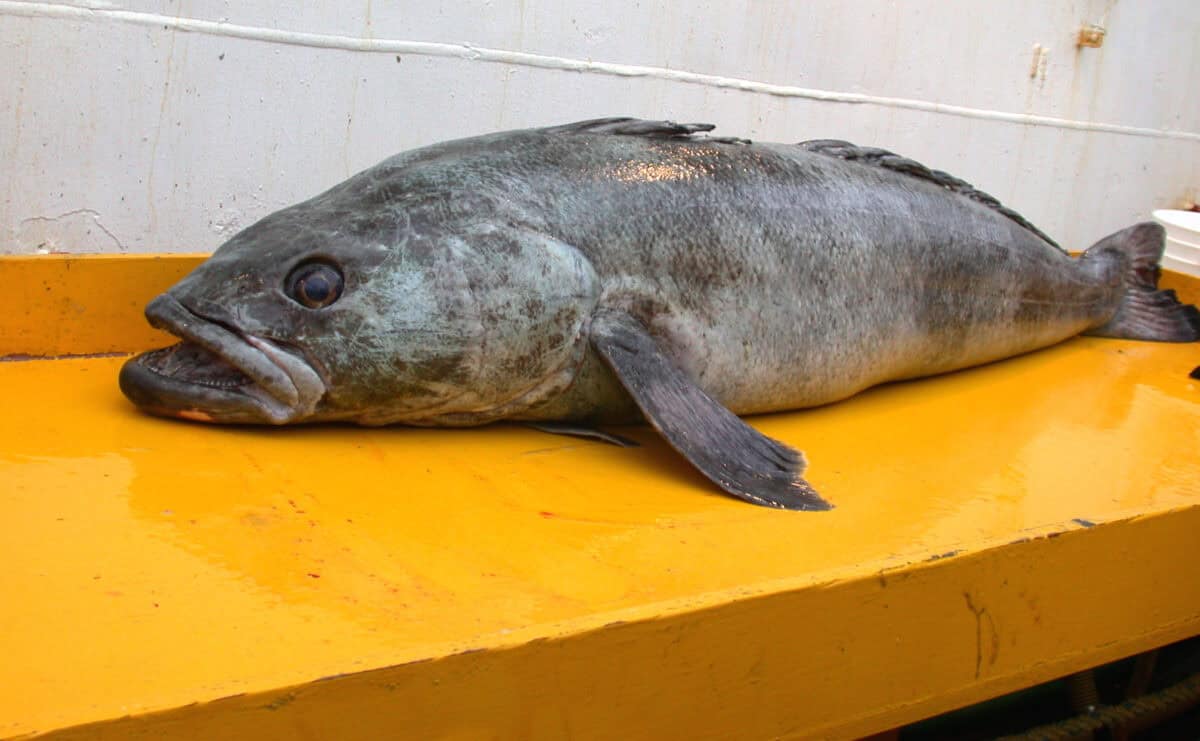
Narwhals display selective hunting behaviors, focusing primarily on Greenland halibut, Arctic cod, and polar cod, which together constitute approximately 83% of their diet. Seasonal variation in hunting patterns is pronounced, with narwhals targeting different prey species depending on ice conditions and migration patterns. During summer months in open water, they hunt more frequently in the water column, stunning fish with quick lateral tusk movements.
Winter brings a shift to deeper feeding, with narwhals diving to depths exceeding 1,500 meters to hunt benthic prey along the ocean floor. Research using stomach content analysis and stable isotope techniques reveals that adult narwhals consume approximately 25-30 pounds of fish daily, with the tusk-stunning technique employed primarily for larger, more nutritionally valuable prey. Interestingly, juvenile narwhals without fully developed tusks exhibit different hunting strategies, relying more on group coordination and suction feeding without the stunning component.
Satellite tracking data indicates that narwhals return to the same hunting grounds year after year, suggesting they develop specialized knowledge of productive fishing areas. Recent studies also show that narwhals adjust their hunting depth based on lunar cycles, possibly responding to vertical migrations of their preferred prey species.
Social Aspects: Teaching and Learning the Technique

The complex tusk-stunning behavior appears to be partly innate and partly learned through social transmission within narwhal pods. Observational studies have documented adult males demonstrating the technique to younger narwhals, who initially attempt simplified versions of the movement.
This teaching behavior typically occurs during the spring migration when food is more abundant, allowing juveniles to practice with less pressure to secure calories. Researchers have identified a progressive learning pattern, with young narwhals first developing the basic motor skills for tusk manipulation around age three before gradually refining the precision needed for successful fish stunning over the next two to three years. Pod structure supports this knowledge transfer, with family groups typically consisting of mother-offspring units accompanied by related adults who participate in the educational process.
Acoustic recordings reveal specific vocalization patterns during these teaching sessions, suggesting a form of instructional communication. The social learning component explains regional variations in stunning techniques observed between different narwhal populations, with distinct “cultural traditions” of tusk use emerging in separate geographical areas. This combination of biological predisposition and social learning ensures the continuation of this specialized hunting behavior across generations.
Beyond Hunting: Multiple Functions of the Tusk

While fish stunning represents an important function of the narwhal tusk, research confirms it serves multiple additional purposes. Male narwhals engage in “tusking” behavior—crossing and rubbing tusks with other males—which establishes social hierarchies and dominance within pods. Hormone analysis of tusks shows seasonal testosterone spikes correlating with increased tusking activity, supporting the sexual selection hypothesis.
The tusk also functions as a thermoregulatory organ, with thermal imaging revealing heat exchange occurring through its highly vascularized structure. In addition, narwhals have been observed using their tusks to break through thin ice when breathing holes are scarce, providing emergency access to air. Underwater footage has captured narwhals scraping the ocean floor with their tusks, potentially disturbing benthic organisms to make them easier to capture. Some researchers propose that the tusk may even serve a hydrodynamic function, potentially reducing drag while swimming or aiding in orientation during deep dives.
This multifunctionality makes the narwhal tusk one of the most versatile adaptations in the marine mammal world. The energetic investment required to grow and maintain such a large specialized tooth is offset by these diverse benefits, explaining why this seemingly cumbersome appendage has persisted through evolutionary time.
Conservation Implications of Specialized Feeding

The narwhal’s specialized feeding mechanism creates unique conservation concerns in a rapidly changing Arctic environment. Climate change is dramatically altering ice patterns and fish distributions, potentially disrupting the delicate balance that makes tusk-stunning an effective hunting strategy. Rising ocean temperatures have begun shifting the range of key prey species, forcing narwhals to adapt their hunting techniques or expend more energy searching for familiar food sources.
Additionally, increased shipping through newly ice-free Arctic passages creates underwater noise pollution that can interfere with the narwhals’ ability to locate prey using echolocation, potentially compromising the precision needed for successful stunning. Conservation biologists monitoring narwhal populations have documented concerning trends in body condition in some regions, possibly indicating reduced hunting success. The specialized nature of tusk-hunting makes narwhals particularly vulnerable to ecosystem changes compared to more generalist feeders like belugas.
Traditional harvesting by Indigenous communities has historically targeted male narwhals for their tusks, potentially altering population sex ratios and reducing the number of experienced hunters that can teach stunning techniques to younger generations. Conservation efforts now include establishing protected marine areas in key narwhal feeding grounds and implementing stricter regulations on Arctic development to preserve the environmental conditions that support this unique hunting behavior.
Conclusion: Nature’s Specialized Hunter

The narwhal’s ability to stun fish with its tusk represents one of nature’s most remarkable hunting specializations, perfectly adapted to the challenging Arctic environment. This behavior, only recently documented through advanced research techniques, solves the centuries-old mystery surrounding the purpose of one of the animal kingdom’s most distinctive physical features. The tusk-stunning technique demonstrates evolutionary ingenuity in balancing energy expenditure against hunting success, critical for survival in an ecosystem where resources are limited and conditions harsh.
As Arctic environments undergo rapid transformation due to climate change, the future of this specialized hunting behavior remains uncertain, highlighting the importance of continued research and conservation efforts to protect these extraordinary marine mammals. The narwhal’s sophisticated hunting strategy serves as a powerful reminder of nature’s endless capacity for specialization and the intricate relationships between anatomy, behavior, and environment that shape the remarkable diversity of life on our planet.
- The Real Story Behind Balto’s Heroic Journey - August 16, 2025
- How Bald Eagles Choose a Lifelong Mate - August 16, 2025
- Narwhals Use Their Tusks to Stun Fish - August 16, 2025

